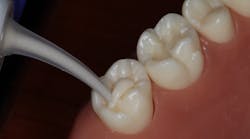Why you should know your numbers and what they mean
One of the most important aspects of running a dental practice is understanding the key performance indicators or KPIs. These are the numbers that tell you how you're doing, where your opportunities lie, and what your deficits are. Deficits are especially important to know because they represent a hidden opportunity to improve performance, production, and income. Dentists and hygienists need to be aware of the numbers, but do they each need to be aware of the same numbers? No, although there is some overlap. This article will explore the minimum set of KPIs that are essential to know.
What numbers do dentists need to know?
Dentists should focus on one main area in terms of practice performance and that is production. Production is the KPI that is more important than all others for the simple reason that if production grows every year, the practice will be fine. In fact, in many cases, it will be more than fine because the increase each year is just like compound interest on your investments. A good investor knows that if you have return on investment (ROI) each year, its value grows and grows. The same is true for dental practice production.
In understanding production there are several additional KPIs that are important.
Total production
You need to know your total production. Levin Group recommends that you set a target of 15%-18% total production growth for each of the next three years. This is very achievable for most practices assuming your current schedule is constructed to achieve production goals. When it comes to providing appointments to patients, many practices do not design their schedules around production goals and just "let things happen." Dentists are often fooled by their current schedule because if they feel busy, it seems like production has reached a ceiling. But by mathematically designing the correct schedule, significant production can be accomplished in the same number of hours.
Production per day
How much production needs to happen each day? Practices should establish a daily goal, which is nothing more than a calculation based on the annual production goal. Although you won't meet the goal every day, you should aim to always be within 10% above or below. Yesterday's production should be reviewed at the following morning business meeting.
Production per hour
It may seem superfluous to also analyze the production per hour, but an understanding of hourly production is powerful. The more you can break down where, when, and how production happens, the more evident will be the key strategies to employ to improve production performance.
Production per patient
This is a fascinating KPI. We see high-volume, heavy-insurance practices that do very well, and others that also do very well that are exclusively fee-for-service. There is no single model for achieving production and profit, but understanding the production per patient gives insights into other opportunities. For example, can hygienists identify more treatment per patient through better diagnosis, patient motivation, and education before the doctor exam? Could a new service be offered or another service be expanded? Will better operational systems improve efficiency, allowing for more chair time, more patients, and more production?
Production per new patient
This is a critical KPI, and most dentists do not completely recognize why. It is critical because, on average, new patients have a financial value of 200%-300% higher in the first 12 months than current active patients. Therefore, it is important to analyze how many new patients are needed per month and place blocks in the schedule to accommodate their visits. You want to have new patients come into the practice within seven to 10 days of their first call so they don't drop out or fail to show up. The sooner you see new patients, the higher the level of case acceptance, especially when same-day treatment can be offered.
New patient flow is critical, and internal marketing is the least expensive and most effective method to achieve results. Refer-a-friend campaigns and other internal marketing strategies are very effective at bringing in new patients. If you decide to spend money on external advertising, be careful not to sign long-term contracts until extensive testing has taken place to prove that the recommended strategies work.
Overhead
Expenses must be carefully tracked. Overhead is a ratio of expenses to production. A-a simple percentage that tells you a lot. The best way to reduce the overhead percentage is to increase practice production. When production rises faster than expenses, the overhead percentage goes down. Recently, overhead percentages have been difficult to reduce primarily due to increases in staff compensation costs. Those costs aren't going to come down,; therefore, higher production is needed to offset. This is part of the new normal.
What numbers do hygienists need to know?
Hygiene KPIs are different because hygienists' responsibilities and area of focus are different than dentists'. They contribute to production and are typically the only other production provider in the practice.
Almost any practice can increase hygiene production by 20% in a short period of time. Given the high compensation levels of hygienists today, this will be essential. Some practices are experiencing a negative ROI from the hygiene department even though hygiene can be extremely productive for a practice. The following hygiene KPIs are important to track:
Hygiene production per day
Simply measure hygienist production per day and keep an ongoing log. Is it stable? Rising? Declining?
Ancillary services
Hygienists have a tremendous opportunity to recommend ancillary services to patients, like fluoride, x-rays, and sealants. Many practices believe they're up-to-date on these services, but may have thousands of dollars' worth of unrealized production because they aren't tracking how many patients are behind schedule. Review every hygiene patient scheduled for that day in every morning meeting and determine whether they are up-to-date or need specific services.
Periodontal diagnosis and treatment
Periodontal disease is an epidemic. According to Levin Group data, 71% of practices do not probe and record pocket depth annually, which means they are not thinking about or looking for gingival or periodontal disease. By probing every patient at least once a year, the practice will identify a significant amount of disease to be treated. Not only do patients benefit, but the practice will significantly increase production. Collaborate with the hygienists to ensure that every patient who needs it is treated.
Production referred to the dentist
Dentists need to work with hygienists on understanding different diagnostics and how to talk to patients during hygiene appointments to educate and motivate them to accept treatment. This may be one of the largest production opportunities in dental practices today.
In sum ...
It's essential to not just know your numbers, but know what they mean. Dentists and hygienists should both have a set of numbers as they can contribute to higher practice production every year. When this occurs, you will identify new opportunities and be able to implement diagnostic and treatment strategies that will benefit the practice today and tomorrow.
Editor's note: This article appeared in the October 2025 print edition of Dental Economics magazine. Dentists in North America are eligible for a complimentary print subscription. Sign up here.
About the Author
Roger P. Levin, DDS, CEO and Founder of Levin Group
Roger has worked with more than 30,000 practices to increase production. A recognized expert on dental practice management and marketing, he has written 67 books and more than 4,000 articles, and regularly presents seminars in the US and around the world. To contact Dr. Levin or to join the 40,000 dental professionals who receive his Practice Production Tip of the Day, visit levingroup.com or email [email protected].


